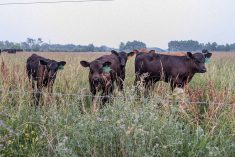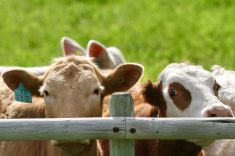The winner’s circle is a familiar place for Margaret Sampson.
The social worker from Surrey, B.C., tours three or four sheep shows a year with her purebred Suffolks and coloured sheep. She regularly takes home red ribbons.
Her eye-catching coloured sheep are a favorite with spinners and weavers who want a natural colour to blend in their yarns. Sampson is not a devoted needleworker. She raises her 13 sheep on two acres of land for fun and as a stress reliever from her hectic job.
Read Also

U.S. farm group supports supply management
U.S. grassroots farm advocacy group pushing new agriculture legislation that would move towards supply management like Canada has for dairy industry
“I have them because I like the way they look,” she said after taking the grand champion coloured ewe banner at the Calgary Stampede.
“The wool is a bonus.”
Her wool is a fine to medium grade. The colour can range from a dark brown to a coffee and cream hue.
Sampson got into coloured sheep when she bought a brown ewe in 1993. The offspring are the result of crossing the coloured with South African meat merino and Columbias.
Sheep are usually sheared in April, producing between eight and 10 pounds of wool.
One fleece yields two average- sized sweaters, said Sampson’s friend Freda Horton, who regularly buys the wool.
She likes the natural colour for spinning and knitting. She prefers a blend of mohair to make a tweed-like yarn.
At the Stampede, sheep are graded 60 percent on wool quality and 40 percent on body conformation. Judges look at colour, crimp and fineness.
Sampson does not have micron counts done to measure the fineness of her sheep’s wool.
“An experienced wool person can usually judge what the fineness is,” she said.
As a member of the Lower Mainland Sheep Producers Association, she participates in an annual fleece sale where raw wool is sold to spinners and weavers from all over British Columbia.















